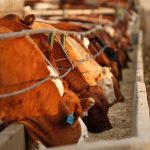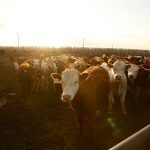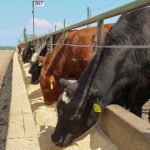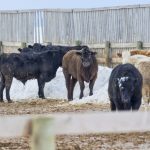It’s that time of year when available supplies start to decline. At the same time, demand is limited. Most backgrounding operators have sufficient numbers and demand for grassers is waning. Ontario interest was noted in Manitoba and Eastern Saskatchewan, which appeared to sustain prices near last week’s levels.

Klassen: Feeder cattle market takes defensive tone

Klassen: Feeder cattle experience weather market
For the week ending May 4, Western Canadian feeder cattle prices were quite variable and the market was hard to define. Alberta and certain regions of Saskatchewan received snow, which caused the market to trade $3 to $5 lower. However, in Eastern Saskatchewan and Manitoba, feeder cattle prices were steady to $3 higher.

Cattle market works to ration demand
Cattle prices are expected to reach historic highs this summer, then drop
During the first half of April, Alberta packers were buying fed cattle on a live basis at $240 per hundredweight delivered, up $8/cwt from a month earlier. Market-ready fed cattle supplies in Alberta and Saskatchewan are tightening, causing the fed cattle basis to strengthen. While the Canadian domestic slaughter is running slightly below year-over-year levels, […] Read more

Klassen: Stronger fed market underpins feeder complex
For the week ending April 27, Western Canadian feeder cattle markets were relatively unchanged compared to seven days earlier.

Klassen: Feeder market recovers from weather discount
Compared to last week, backgrounded yearlings traded $4-$8/cwt higher on average. Calves were quite variable with prices quoted from unchanged to as much as $10 higher. Overall, there appeared to be stronger buying interest this week across all weight categories.

Expect stronger cattle markets for third quarter
A surprise reduction in beef production could mean higher prices
During the second week of March, Alberta packers were buying fed cattle on a dressed basis in the range of $378-$380 per hundredweight (cwt) delivered. Prices f.o.b. (free on board) the feedlot in southern Alberta were quoted from $225 to $226/cwt. The market has been consolidating over the past month, as market-ready fed cattle supplies […] Read more

Klassen: Adverse weather weighs on Western Canadian feeder market
Southern Alberta has received over 200 percent of normal precipitation over the past 30 days. Pen conditions are rated poor to very poor in the main feeding pockets of Alberta. Saskatchewan and Manitoba have received less than 40 per cent of normal while Central Alberta has normal to below normal precipitation.

Klassen: Buyers step back on feeder cattle due to bird flu
Compared to last week, Western Canadian feeder cattle markets traded $4-$8/cwt lower while some packages of heavier replacements dropped as much as $12/cwt, and three main factors led to weaker prices.

How consumer spending drives fed cattle prices
Here's why a small change in spending affects the beef market
Cattle producers are bombarded with charts and data from cattle inventory reports and cattle on feed surveys. During the fall of 2023, live cattle futures and were trending lower. Every analyst I was reading was focused on how low supplies were from a historical perspective; however, fed cattle prices were on a downward spiral. It’s […] Read more

Klassen: Feeder market resumes the climb
For the week ending March 30, Western Canadian feeder cattle markets traded $4 to $6 higher on average. Fleshier backgrounded yearlings were relatively unchanged. Buyers were fairly cautious on backgrounded heifers with some packages actually softer than seven days earlier. Larger strings of quality genetic, low flesh steers were up $6 to as much as $10 in some cases. Weaned, premium, calves were up a solid $5 to $6 on average.


